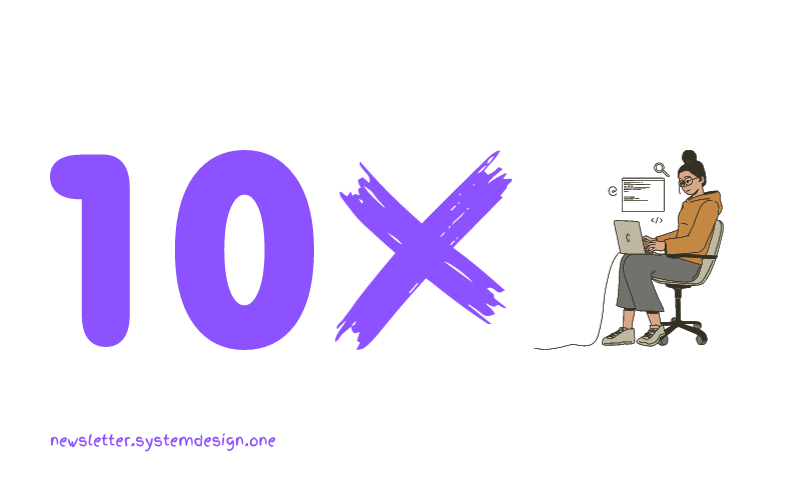How LinkedIn Scaled to 930 Million Users
#15: Software Architecture Evolution at LinkedIn (3 minutes)
Get my system design playbook for FREE on newsletter signup:
This post outlines how LinkedIn evolved its software architecture over time. I will walk you through their architectural evolution in 11 stages. Each stage shows how they changed the architecture to meet increasing scalability needs.
If you want to learn more, scroll to the bottom and find the references.
Share this post & I'll send you some rewards for the referrals.
Scalable Software Architecture
LinkedIn started with 2,700 users in 2003 and now has around 930 million users. Here is the chronological order of their evolutionary stages:
1. The Monolith
They installed a single monolith application and a few databases to do all the work.
2. Graph Service
As number of users grew, they wanted to manage connections between users in an efficient way.
So they created a separate in-memory graph service and communicated with it via RPC.
3. Scaling Database
The database became a performance bottleneck. As a workaround, they scaled it vertically by adding CPU and memory. But soon it hit limitations and became expensive.
So they installed (replica) follower databases to scale further. It served reads.
But this solution worked only for the medium term because it didn’t scale the writes. So they partitioned the database to scale writes.
4. Service-Oriented Architecture
They needed high availability but it was hard for the app server to keep up with high traffic.
So they broke the monolith into many small stateless services:
Frontend service - presentation logic
Mid-tier service - API access to data models
Backend data service - access to the database
They kept the services stateless because it is easy to scale out by replication. Besides they did load testing and performance monitoring.
LinkedIn had 750 services in 2015.
5. Caching
Caching was the right choice for them to meet scalability needs with hypergrowth.
Also they relied on CDN and browser cache.
Besides they stored precomputed results in the database.
6. Birth of Kafka
They needed data to flow into the data warehouse and Hadoop for analytics. So they created Kafka to stream and queue data.
Kafka is a distributed pub-sub messaging platform.
7. Scaling Engineering Teams
They put the entire focus on improving tooling, deployment, infrastructure, and developer productivity. And paused feature development.
It improved their engineering agility to build scalable products.
8. Birth of Rest.li Framework
They wanted to decouple services, so they switched to RESTful API and sent JSON over HTTP.
And built the Rest.li web framework to abstract many parts of data exchange.
9. Super Blocks
Service-oriented architecture caused many downstream calls and it became a problem. So they grouped the backend services to create a single access API.
10. Multi Data Center
They needed high availability and wanted to avoid single points of failure.
So they replicated data across many data centers. And redirected user requests to nearby data centers.
11. Ditch JSON
JSON data serialization became a performance bottleneck. So they moved from JSON to Protobuf to reduce latency.
LinkedIn followed the idea: keep it simple. And changed their architecture based on needs. They remain the biggest network for Professionals in 2023.
Consider subscribing to get simplified case studies delivered straight to your inbox:
Thank you for supporting this newsletter. Consider sharing this post with your friends and get rewards. Y’all are the best.
References
https://engineering.linkedin.com/architecture/brief-history-scaling-linkedin
https://newsletter.systemdesign.one/p/protocol-buffers-vs-json















I adore your articles man !
Great article :)
I would have loved to see the whole architecture in each step, to see how it 'evolves' (and looks at the end).